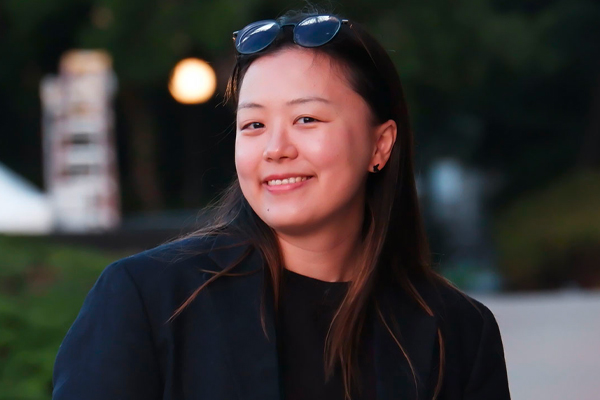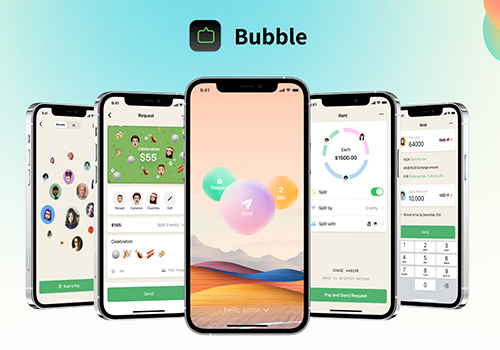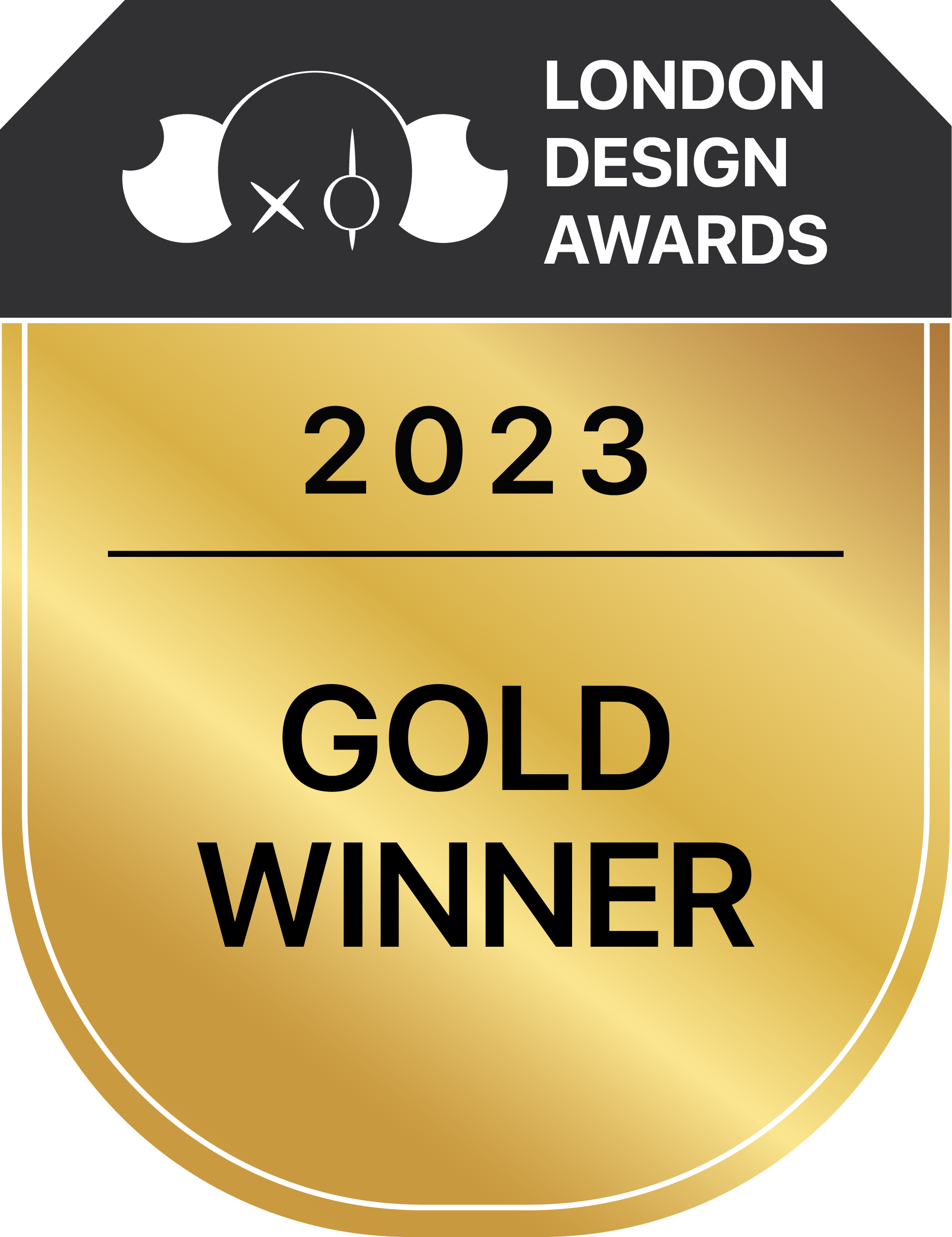
Simin Gu
1. Please give us a brief bio of yourself and your design background.
I am a multi-disciplined designer with a passion for the captivating realms of Data and spatial design. Guiding people through the intricate dimensions of data and physical space is my calling. I proudly hold a master's degree in Integrated Design and Media from New York University, which has provided me with a strong foundation in this ever-evolving field.
As a product designer, my focus is on creating user-centric solutions that harness the power of data and technology. My goal is to design products that empower users to effortlessly explore, analyze, and communicate data effectively and intuitively. With expertise in data product design, spatial design, and Mobile design, I bring a diverse skill set to the table.
Currently, I am fortunate to be part of the innovative team at Sigma Computing, a cloud-native analytics and business intelligence platform. Here, I have the opportunity to further refine my skills and contribute to the development of cutting-edge solutions.
By combining my interdisciplinary design background, passion for assisting others, and expertise in data and spatial design, I am committed to creating impactful experiences that bridge the gap between different dimensions.
2. What made you become/why did you choose to become a designer/artist?
I was inspired by the iconic Steve Jobs, a true visionary who altered the worlds of technology and design.
I was drawn to the power of design
3. Tell us more about your agency/company, job profile, and what you do.
At my current position, I hold the role of Senior Designer on the core visualization team at sigma computing. As part of this role, I have been involved in designing and shipping various key components, including the dashboard builder, data interaction system, and a range of analysis features.
One of the primary aspects of my job is tackling highly ambiguous problems and finding creative solutions. This involves conducting extensive user research to gain a deep understanding of user needs, pain points, and behaviors. By delving into user insights, I can design intuitive and user-friendly experiences that effectively address their requirements.
In addition to user research, I also take the lead in conducting design reviews with cross-functional teams and C-level stakeholders. Collaboration is a crucial element of my work, as I work closely with product managers, researchers, engineers, customer support, product architects, and other designers. By collaborating with diverse teams, I can gather different perspectives, leverage collective expertise, and ensure that our projects are aligned and successful.
My job profile encompasses a range of responsibilities, from initial ideation and wireframing to prototyping and visual design. I strive to create cohesive and visually compelling experiences that not only meet user needs but also align with the overall product vision and brand identity.
4. What does “design” mean to you?
The potential of design to act as a translator, converting dense knowledge into intuitive interfaces, is extremely powerful. It empowers people and increases their ability to explore, interpret, and share information in ways that are meaningful to them. Design, through this process, broadens our understanding, develops cooperation, and empowers individuals to make professional decisions.
5. What’s your favorite kind of design and why?
My favorite kind of design is generative art. Generative art is a topic that mixes art, design, and computing. It entails generating artwork or designs utilizing algorithms, computer code, and systems that yield visual or interactive results. Its potential to generate surprising and ever-changing graphics can be a thrilling and motivating aspect for designers who value the convergence of art and technology.
6. To you, what makes a “good” design?
I think a good design is one that blends into the user's experience without attracting attention to itself. When users find each step to be intuitive and natural, it indicates that the design has been carefully designed to meet their wants and expectations. The beauty of such design is its ability to blend into the background, allowing users to concentrate on their work or goals without being distracted by extraneous complications. Finally, a good design should feel so natural that people barely notice it while still improving their entire experience meaningfully.
7. How did you come up with the idea for your award-winning design?
My award-winning design was inspired by a personal experience that many people can relate to: sharing expenses among friends after a birthday party. Following a recent celebration I planned for a close friend, we faced the difficulty of dealing with bills and currency fluctuations, frequently resulting in awkward conversations and refund delays.
I decided to design an app that would streamline and simplify money transactions between friends, making the process smoother and less awkward. Armed with these insights, I devised a mobile app as a digital wallet and cost tracker tailored to social groupings. The software included an easy-to-use UI that allowed users to create shared spending groups and ask friends to join easily. It enabled users to submit expenses in their various currencies and computed the amounts owed by each individual based on real-time exchange rates.
8. What was your main source of inspiration for this design?
My observations of ordinary life were the primary source of inspiration for this design. I get ideas by closely monitoring how I and my friends engage with various products and services, as well as finding common pain areas that ordinary people face.
My experiences with finance apps, in particular, inspire me. Many existing apps, in my opinion, lack a focus on addressing unique real-life use cases that individuals confront. This observation has inspired me to create with the goal of actually assisting people in their daily lives.
9. Do you think your country and its cultural heritage has an impact on your design process?
My culture encourages me to be humble and to attempt to make people happy with my design. So, during my design process, I pay extra attention to testing in order to obtain fast feedback on how people emotionally perceive my design.
10. Congratulations! As the winner of the London Design Awards, what does it mean to you and your company and team to receive this award distinction?
The London Design Awards have a high reputation and provide a forum to display great design work. It confirms that my effort, creativity, and knowledge have been recognized and appreciated by industry leaders and design experts. This honor strengthens our confidence and pushes us to continue pushing the frontiers of design excellence.
11. Can you explain a bit about the winning work you entered into the London Design Awards, and why you chose to enter this project?
I've always been passionate about bridging the gap between humans and machines. However, I firmly believe that human-to-human communication remains incredibly powerful and compelling. That's why I find the field of finance between friends particularly intriguing. It combines the logical nature of financial transactions with the emotional connections we have with our friends.
12. What were the main challenges you faced during the design process, and how did you overcome them?
Balance Seriousness and Engagement: Finance apps frequently deal with sensitive and serious issues. It can be difficult to strike the appropriate mix between giving important information and engaging users. To give a sense of excitement and engagement, I employed vivid images, animations, and micro-interactions.
13. How do you think winning this award will impact your future as a designer?
I am a professional data product designer, mainly working on 2B products. Winning this award will encourage me to explore more 2C mobile design and broaden my expertise. It will provide recognition for my skills in product design while also motivating me to venture into new areas.
14. What are your top three (3) favorite things about the design industry?
1. Design is always at the forefront of technology
2. Good design never gets old
3. Designers are willing to share knowledge
15. What sets your design apart from others in the same category?
I think my principle of design is to make users happy. So I added some cute details and animations to my design.
16. Where do you see the evolution of design industry going over the next 5-10 years?
I think it's highly likely that the design industry will witness a significant shift towards designs related to spatial experiences in the coming years. With advancements in technology such as virtual reality (VR), augmented reality (AR), mixed reality (MR), and spatial computing, designers will have new opportunities to create immersive and interactive experiences in physical spaces.
As technology continues to evolve, we can expect to see an increased focus on creating immersive and personalized spatial experiences. This may involve designing virtual environments that simulate real-world scenarios, incorporating AR to enhance physical spaces, or using MR to blend digital and physical elements seamlessly.
17. What advice do you have for aspiring designers who want to create award-winning designs?
Rather than trying to tackle a broad range of design disciplines, identify a specific area or industry that you are truly passionate about. By specializing in a particular topic, you can develop a deep understanding and expertise, allowing you to create exceptional designs that stand out.
18. What resources would you recommend to someone who wants to improve their skills in the design industry?
Explore design articles on Medium. Follow design-focused publications and individual designers who share their insights, tips, and case studies. Medium offers a wealth of knowledge and perspectives that can help broaden your understanding of design principles and industry trends.
Dedicate time each day to practice your design skills. This could involve sketching, wireframing, creating mock-ups, or engaging in design exercises. By consistently practicing, you can refine your techniques, experiment with different styles, and build a strong foundation in design.
19. Tell us something you have never told anyone else.
I am also a photographer and a hiker.
20. Who has inspired you in your life and why?
Maybe people have inspired me in my life. I learned different things from different people in different life stages. I think everybody around us has something we can learn from.
21. What is your key to success? Any parting words of wisdom?
Consistency and hard-working is the key to success. I think hard-working is a quality I admire the most.

